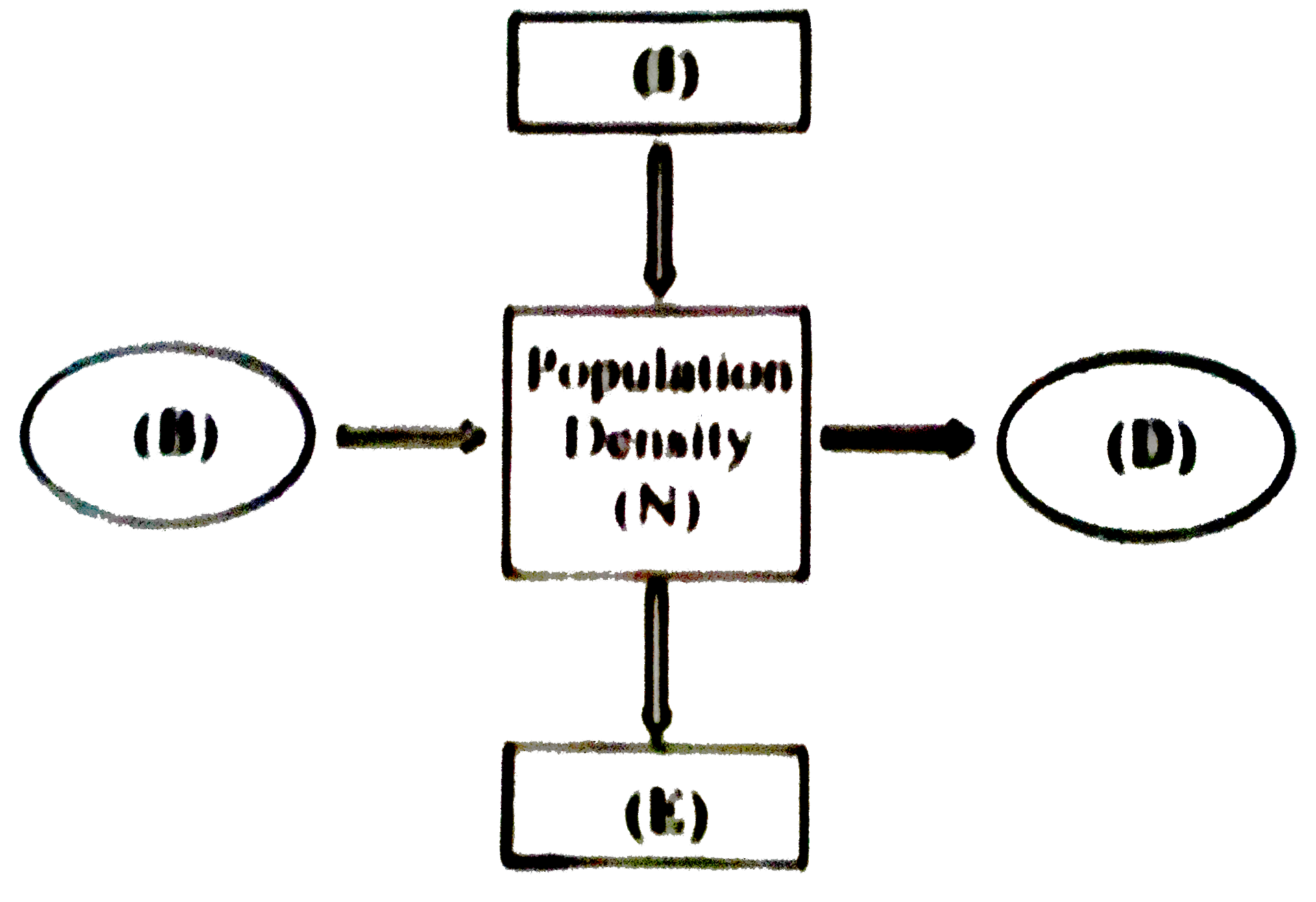If a new habitat is just being colonised, ... 1 ... may contribute more significantly to population growth than .. .2… (where b =birthrate. E = Emigration, I - Immigration).
1-b, 2-E
1-I, 2-b
1-I, 2-E
1-b, 2-I
The correct Answer is:B
Ifa new habitat is just being colonized, (iminigration) I may contribute more significantly to population growth than birth rates (b).
Similar Questions
If a new habitat is just being colonised, contribution of which of the following is more significant in the increase in population density?
View SolutionThe rate law expresison is given for a typical reaction, n1A+n2B→P as r=k[A]n[B]n2. The reaction completes only in one step and A and B are present in the solution. If the reaction occurs in more than one step, then the rate law is expressed by consdering the slowest step, i.e., for SNl reaction r=k[RX]. If the eraction occurs in more than one step and the rates of the steps involved are comparable, then steady state approximation is conisdered, i.e., the rate of formation of intermediate is always equal to the rate of decompoistion of the intermediate. Conisder the reaction:
⎡⎢ ⎢⎣I2k2⇐⇒k12I(rapid equilibrium)H2+2Ik3−−→2HI(slow)⎤⎥ ⎥⎦
If we increase the concentration of I2 two times, then the rate of formation of HI willView Solution
Knowledge Check
- Question 1 - Select One
If a\ new habitat is just being colonised, ..1..may contribute more significantly to population growth than ..2..(where b = birth rate, E = Emigration, I = Irrigation).
A1−b, 2−EB1−I, 2−bC1−I, 2−ED1−b, 2−I - Question 2 - Select One
If (B + 1) is more than (D + E) than population will
AincreaseBdecreaseCremain sameDNone of these - Question 3 - Select One
The given figure represents different factors affecting population density (N). If B= natality D= mortality ,E=emigration and I= immigration, then select the incorrect option regarding these.
 AB and D are most influential factors under normal conditions while I and E become important in special conditionsBIn a new habitat just being colonised, I become more important than BCB and I cause positive changes in NDI is generaly equal to E
AB and D are most influential factors under normal conditions while I and E become important in special conditionsBIn a new habitat just being colonised, I become more important than BCB and I cause positive changes in NDI is generaly equal to E
Anthropologists determine that new dwellings in an ancient farming community were constructed monthly as modeled by the function f(x)=2x+100, where x is the current month of the year and f(x) is the number of dwellings constructed by the end of that month. Additionally, they determine that the population grew exponentially each month, thanks to the discovery of more fertile land for farming. This growth is modeled by the equation g(x)=3x, where g(x) represents the current population at the end of a given month. What is the smallest integer value of x, with 1 representing the end of January and 12 representing the end of December, at which the population surpasses the number of dwellings built?
View SolutionThe given figure represents different factors affecting population density (N). If B= natality D= mortality ,E=emigration and I= immigration, then select the incorrect option regarding these.
 View Solution
View SolutionThe rate law expresison is given for a typical reaction, n1A+n2B→P as r=k[A]n[B]n2. The reaction completes only in one step and A and B are present in the solution. If the reaction occurs in more than one step, then the rate law is expressed by consdering the slowest step, i.e., for SNl reaction r=k[RX]. If the eraction occurs in more than one step and the rates of the steps involved are comparable, then steady state approximation is conisdered, i.e., the rate of formation of intermediate is always equal to the rate of decompoistion of the intermediate. Conisder the reaction:
⎡⎢ ⎢⎣I2k2⇐⇒k12I(rapid equilibrium)H2+2Ik3−−→2HI(slow)⎤⎥ ⎥⎦
If we increase the concentration of I2 two times, then the rate of formation of HI willView SolutionThe given figure represents different factors affecting population density (N). If B= natality D= mortality ,E=emigration and I= immigration, then select the incorrect option regarding these.
 View Solution
View SolutionThe American cotton textile industry moved from new England to the Southern States because: (1) The latter have a more humid climate (2) New England diversified its manufacturing industries (3) The population growth in the south provided a major market (4) The south offered lower coast of production
View Solution

